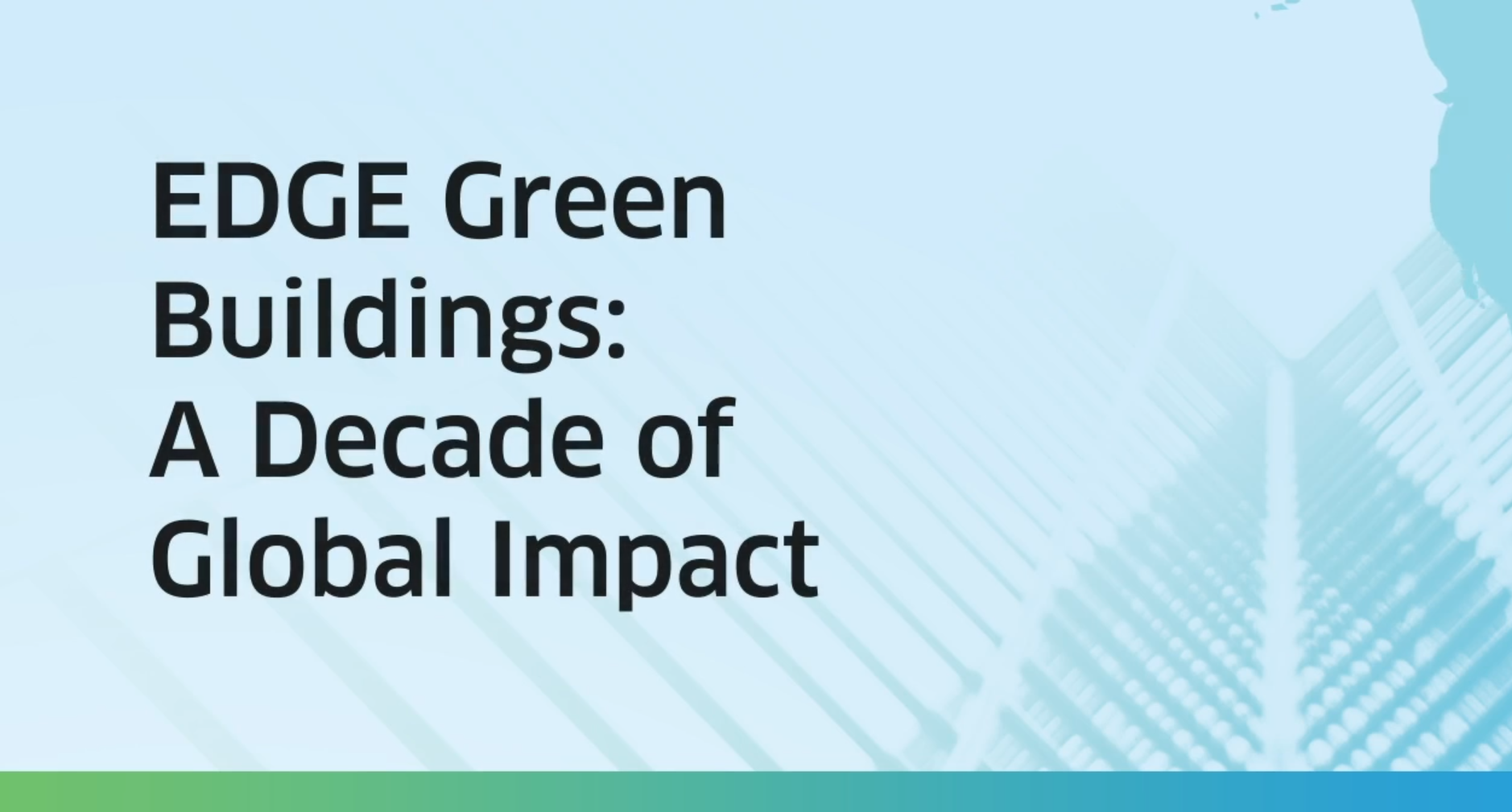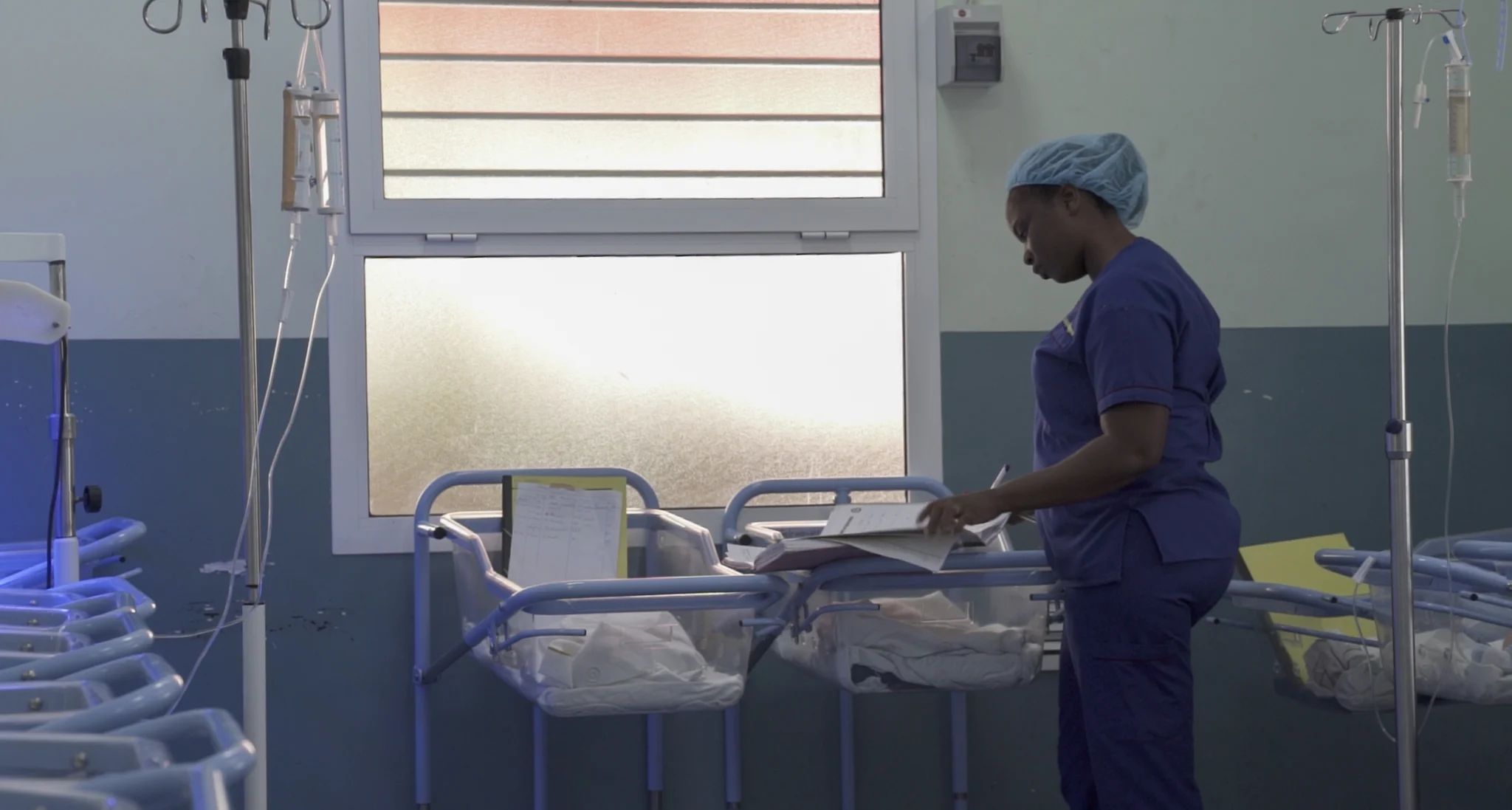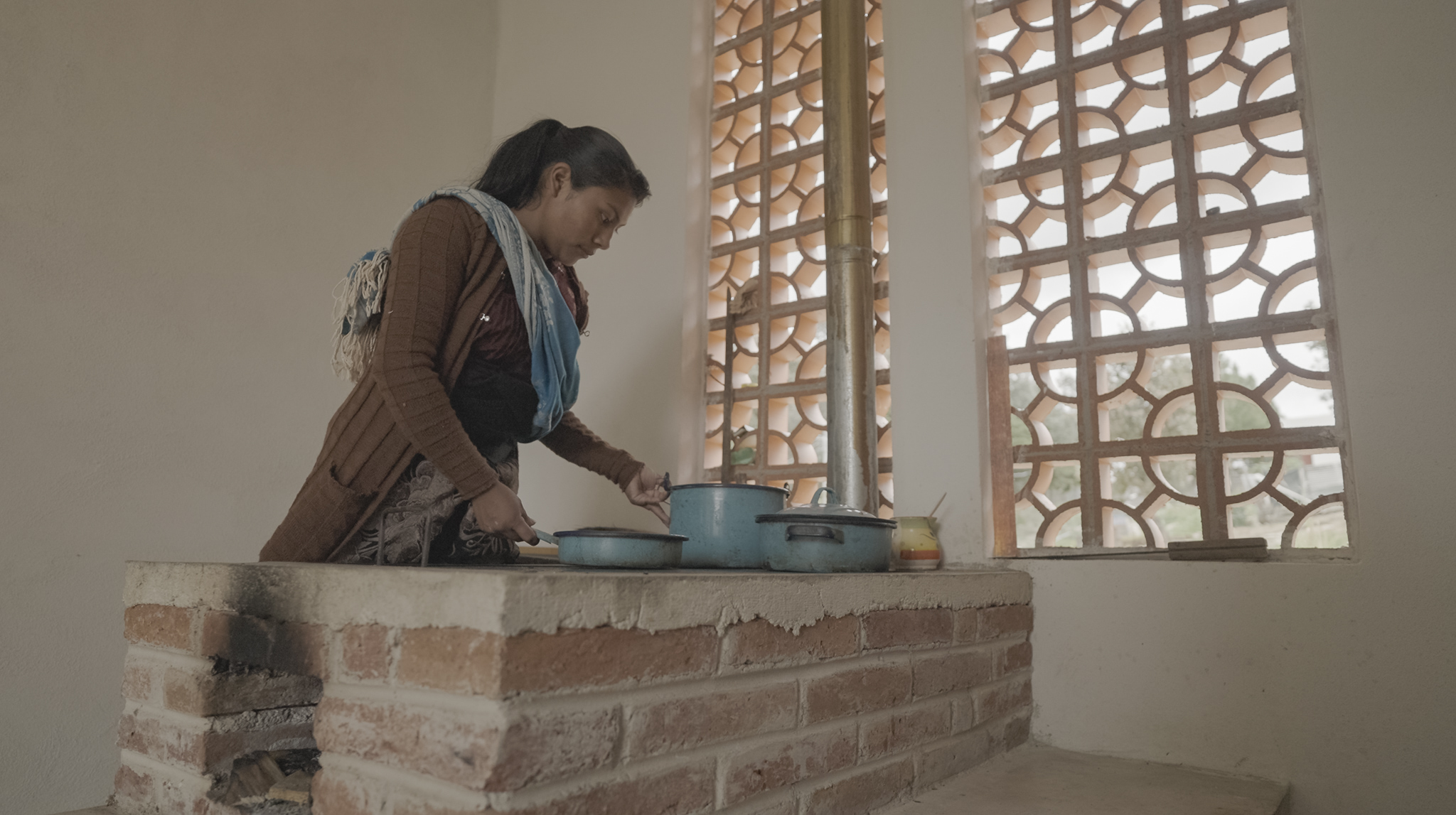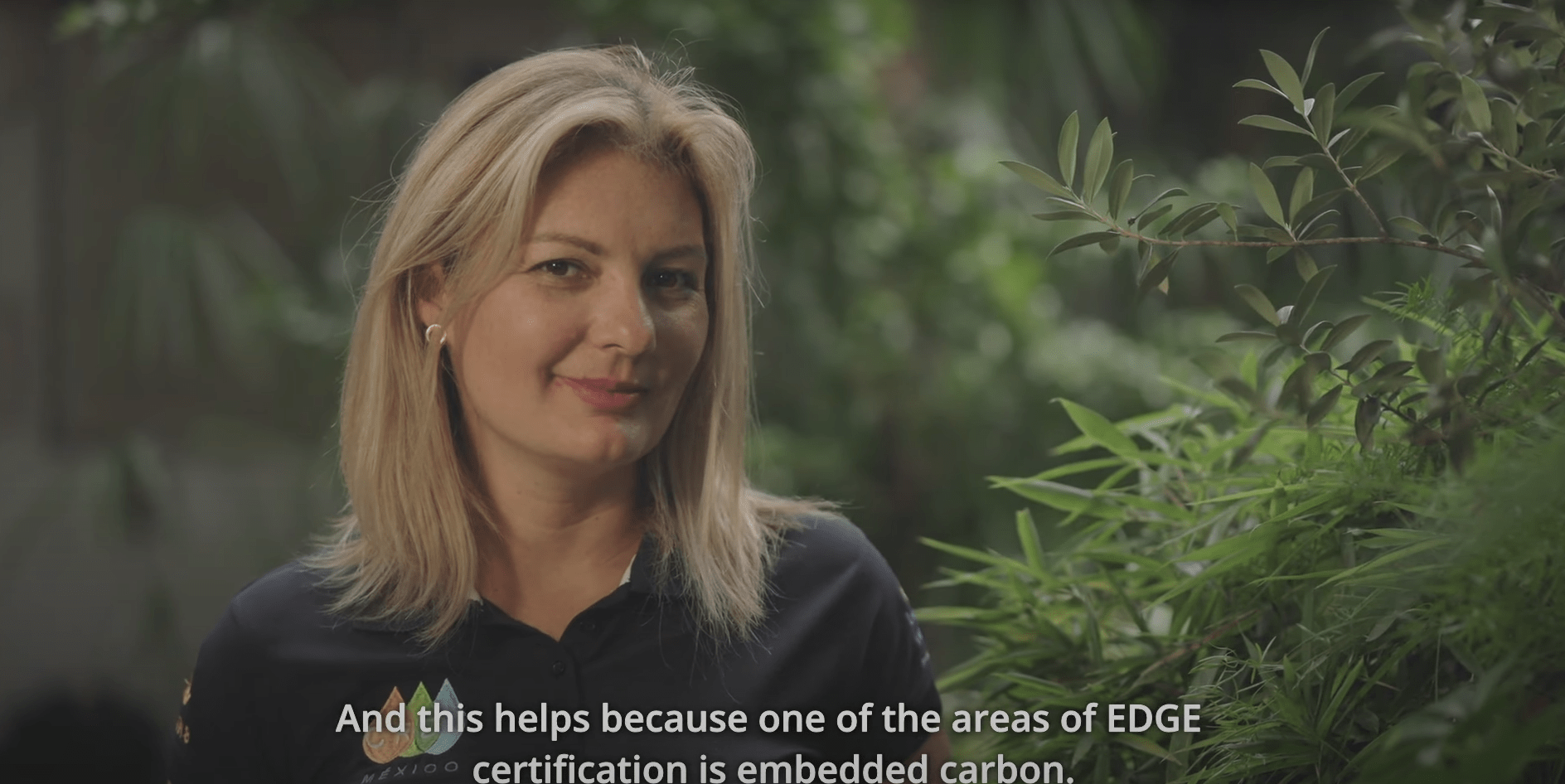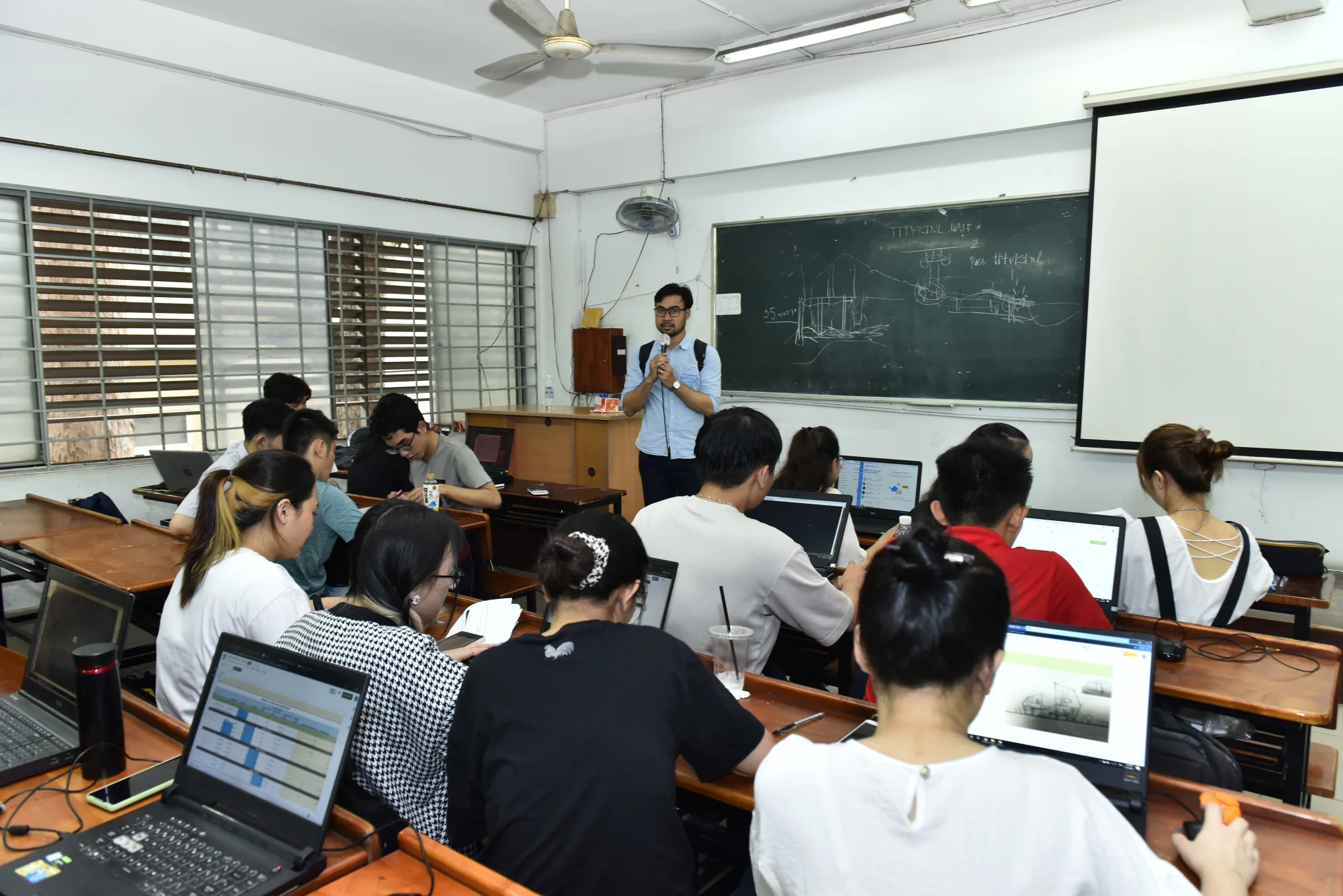A Decade of Impact
How IFC’s EDGE Green Buildings Program Has Transformed Buildings, Jobs, and Communities since 2015
Ten years ago, IFC launched EDGE to solve a pressing challenge: how to make green buildings practical, affordable, and scalable in emerging markets. Today, EDGE is driving transformation in 120+ countries worldwide with more than 122 million square meters of certified green floor space—and the ripple effects go far beyond construction.
For young professionals like Hannah, IFC’s EDGE Green Buildings represents a pathway to career opportunity, visibility, and leadership. Since 2015, buildings certified under EDGE (“Excellence in Design for Greater Efficiencies”), a free software and internationally recognized green building standard, have reached more than 120 million square meters of green floor space across 122 countries.
These numbers represent something deeper: communities where sustainability meets affordability, and where environmental responsibility serves human needs and is people-centered. For developers, governments and financial institutions, EDGE has become a practical tool to build smarter, greener, and more resilient projects. For families in remote communities, it means safer, healthier, and more affordable places to live.
"Receiving the EDGE scholarship was a milestone in my career. It gave me the confidence to step out of my comfort zone and the tools to lead in sustainability."
Hannah Lee D. Sevilla EDGE Expert, Philippines
From Idea to Global Impact
In 2010, IFC climate specialists saw a critical gap in the market.
“We did a lot of building-related investments,” recalls Prashant Kapoor, IFC Chief Industry Specialist and EDGE’s co-founder. “But we had no way to provide better solutions to our real sector clients seeking to meet sustainable development goals—hotels, housing, etc.”
At the time, existing green building certification was complex, costly, and largely inaccessible in emerging markets and developing nations where IFC was focused.
The goal wasn’t to create another certification—it was to create practical value for communities that needed it the most.
IFC Principal Industry Specialist and EDGE Global Lead Ommid Saberi saw this need and potential firsthand during an early mission in Bangladesh. “Many high-end buildings followed sustainability standards, but the benefits for low-income communities were ignored. We wanted to change that.”
EDGE became a tool that anyone, anywhere, could use for any type of building—from social housing and schools, to hotels, warehouses, and hospitals.
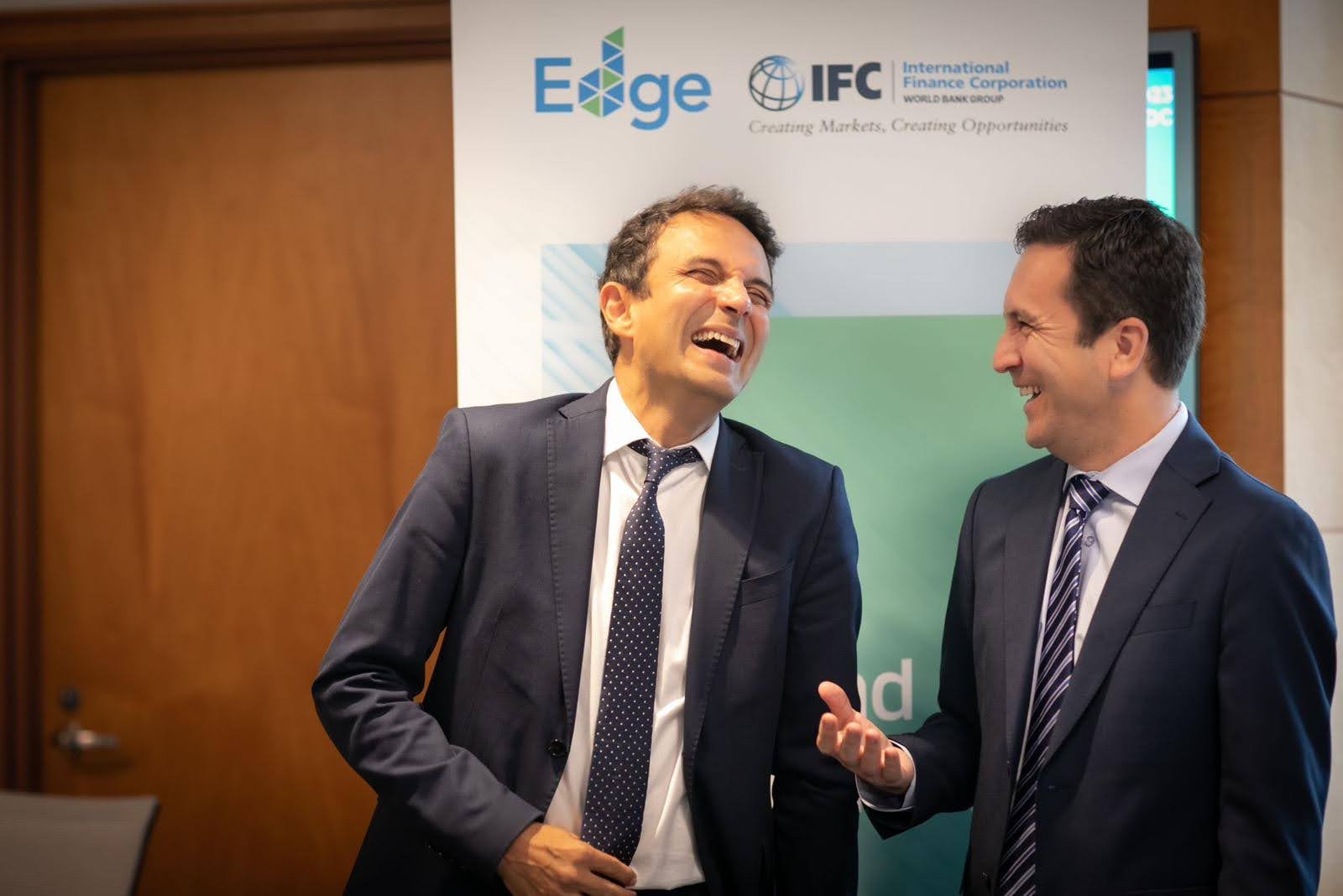
Prashant Kapoor and Ommid Saberi, IFC Principal Industry Specialist and EDGE Global Lead. Photo: Eduardo de la Cerda
Green Hospitals: Efficiency That Saves Lives
In Kumasi, Ghana, the Mother and Baby Unit (MBU) at Komfo Anokye Teaching Hospital faced devastating statistics: up to seven newborn deaths each day and over 100 maternal deaths annually.
Africa Building Partners, working with funds raised by Former First Lady of Ghana Rebecca Akufo-Addo, designed a new EDGE-certified facility employing a workforce that was entirely Ghanian. Eric Gené, former CEO and Founder of Africa Building Partners, knew from his experience in developing green hospitals that the savings from reduced operational expenses could be redirected toward life-saving care. The facility incorporated solar power, efficient lighting and cooling, insulated walls, and improved hygiene infrastructure. The changes in the Mother and Baby Unit were immediate and measurable: babies now have individual incubators, sinks are in every birthing room to reduce cross-infection through increased handwashing, and more beds and theaters have been added.
“When it comes to hospitals, resource efficiency literally translates to saved lives.”
Eric Gené, former CEO and Founder of Africa Building Partners
The life-saving dynamica of green hospitals
Lower operating costs free up funds for medical staff and equipment, directly improving the standard of care. Despite only a modest three percent increase in up-front costs, the payback period for the unit took just four months.
Lessons from the Field
Skepticism was common in the early days. Why another green certification? Could it compete with the already established green building programs?
A breakthrough came when Kapoor visited a hotel project in Cabo Verde. The developers had spent over a million dollars on double glazing and special insulation, expecting energy-efficient gains to improve the thermal comfort of the hotel. Local climate data revealed these measures added little value. Instead, Kapoor argued that external shading could have achieved better results at half the cost.
That insight shaped EDGE’s approach: using localized data to deliver practical, cost-effective solutions, even in the smallest, most remote communities.
Building in Chiapas
In Mexico’s Chiapas region, EDGE certification is helping vulnerable indigenous families with resilience.
The Lekil Na’ project (“sustainable house” in the indigenous Tzotzil language) was developed by Habitat for Humanity México, CRDC Global, and partners including WESCO International and the Dow Impact Fund, with EDGE service provider 3Lotus Partners providing pro-bono support to guide the certification process.
In the Monte Sión community, 11 Tzotzil families now live in newly built EDGE-certified homes. The homes were constructed with concrete blocks made from RESIN8, a technology that converts non-recyclable plastics into a high-value construction additive. Each home reused more than 230 kilograms of RESIN8, diverting two tons of waste that, if not recycled, would have ended up in landfills and waterways.
For a young mother, the move meant more than resource-efficiency—her children would no longer be exposed to smoke and poor air from traditional stoves. “Since I was a baby, I was always exposed to stove smoke,” shares Julia Maria Hernandez. “And now, with this project, I feel I am benefitting because my children will no longer grow up with any disease, neither in their eyes or in their lungs, because they will no longer be breathing smoke from the stove.” The family’s new home also offers improved access to hygiene to prevent illness, she says. “Now, with the solar boiler we save more firewood, before we bathed in the Temazcal [a traditional Tzotzil sweat lodge] but only once a week. Now with the shower you just turn it on, and the hot water comes out.”
From Tool to Ecosystem
What began as an assessment tool, quickly evolved as developers began asking for proof that they could take to banks to unlock more attractive financing.
This became a turning point. “We can show a developer exactly how much their customers will save, how much it costs to go green, and the payback,” said Kapoor. That transparency attracted financial institutions—leading banks like Bancolombia, Nedbank, CIB, BBVA, HSBC, Standard Chartered, and others—which began offering green mortgages and loans for EDGE-certified buildings.
Critical support also came from donor partners. “At first it was just our own time and budget,” Kapoor noted. “But then the Swiss government, the European Union, UK government and the Global Environment Facility came in. They were incredibly patient and visionary.” With this critical support, EDGE soon built the infrastructure for global certification, partnering with local councils and verifiers like GBCI, Sintali, Bureau Veritas, CAMACOL, and GBC South Africa.
South Africa became the proving ground. With concessional finance tied to EDGE, developers could directly compare how quickly rentals in their properties were growing between conventional and green projects. EDGE-certified properties outperformed projects without efficient measures in place, making a stronger case that building green made business sense in emerging markets.
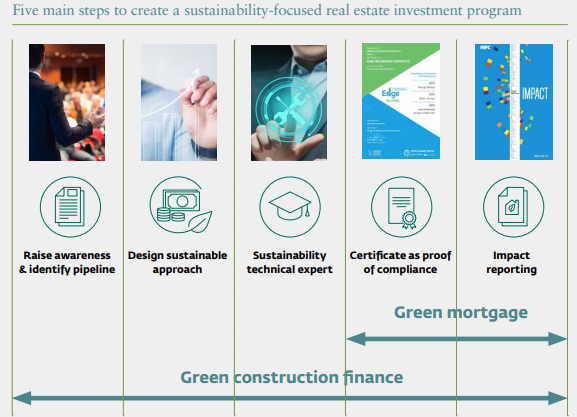
Learn more: Download IFC’s new How-To Handbook for Launching Sustainable Finance for Real Estate Investments in Emerging Markets.
Building Careers, Not Just Buildings
Energy-efficient design creates employment opportunities. Globally, energy efficiency provides employment for nearly 11 million people, making it the largest contributor to green employment in the energy sector.
EDGE has helped fuel that growth. Through the EDGE learning program, IFC has trained over 2,800 EDGE Experts, nearly 500 Auditors, and 100 Faculty members, creating a global network of professionals driving green building adoption.
For many, this has opened career doors. Hannah Lee Sevilla turned an EDGE scholarship into a launchpad for new career opportunities, in an industry where women are historically underrepresented. An architect and EDGE Expert, Sevilla now serves as a Sustainability Associate at Visionarch, a leading architecture firm in the Philippines. “Passing the EDGE Expert exam deepened my belief that women can show as much perseverance and capability when given the same opportunities and exposure to knowledge and innovation. More than this, women deserve a vital place in building and construction not only as contributors, but as leaders.”
In South Africa, Asanda Gwala discovered EDGE through the Greenovate Competition. What began as a student exercise became his career path. Today, he works as a Green Building & Sustainability Consultant guiding projects through certification.
These stories show how these standards are shaping the next generation of sustainability professionals—creating not just environmentally responsible buildings, but greener economies.
"“EDGE has not only shaped my professional journey but also allowed me to contribute meaningfully toward advancing green building practices"
Asanda Gwala, Green Building & Sustainability Consultant
The Road Ahead
Today, with over 120 million square meters of certified space, EDGE continues to expand into resilience, operations, and government policy, alongside new tools like the Building Resilience Index (BRI) and APEX Green Cities.
Ten years on, EDGE has become more than a program—it’s a global movement proving that green building is practical, inclusive, and transformative. And this is only the beginning.
For Saberi, the mission remains clear: “Efficiency is not a choice. Nature never wastes—and what doesn’t evolve, doesn’t survive. Our buildings must do the same.”
This article was originally published on the IFC corporate website.
Design by Ricardo Cabral
Multimedia from Eduardo De La Cerda and Matthew Griffiths. Additional research and support provided by Nadezda Nikiforova.
Published in September 2025

